told stories
A City That Echoes with Questions
In At Tafilah: Valleys Remember, Winds Narrate, and Springs Restore

Carved by eons of wind and weather, At Tafilah's valleys are living testaments to ancient civilizations. Within the shadowy depths of its caves, flint shards whisper tales of prehistoric hunters. And from the towering sandstone cliffs, echoes of a bygone era resound, where the Edomites once built their fiery city of “Tophel”.
Roman legions once traversed the paths between As Sila‘, Al Hasa, Busayra, and Ghrandal, their presence leaving an enduring mark on At Tafilah. Yet, even their legacy faded as the sands of time encroached, replaced by the echoes of the Ghassanid knights, formidable allies of the Byzantine Empire.
At Tafilah's valleys echo with questions: Who once stood sentinel in As Sila‘ Castle's lofty towers? Who sought solace within Busayra’s Byzantine church? Who called the Al Lu‘ban Palace home and engaged in lively conversations in Katrina and At Tuwanah? And from what mysterious depths do the healing waters of ‘Afra springs forth?
This land has witnessed the rise and fall of countless civilizations, each leaving its mark. At Tafilah's history is etched into its very fabric, from its ancient buildings to its rich heritage. Its mosques, which blossomed like desert flowers in the Islamic era, have matured into the heart of the city's identity.
Each call to prayer in At Tafilah echoes the city's rich Islamic heritage. The martyrdom of Al Harith Ibn ‘Umayr, the Prophet Mohammad's envoy to the Ghassanids, is a poignant chapter in this history. Treacherously killed on his journey to Bosra, his sacrifice preceded the iconic Battle of Muʼtah in nearby Al Karak. Inspired by these events, the people of At Tafilah embraced Islam with open hearts.
At Tafilah is a repository of Islamic heritage, housing the shrines of revered companions like Jaber Al-Ansari and Ka‘b Al-Ghifari. These sacred sites are a testament to the city's deep-rooted faith and the heroism of its people. The bravery of At Tafilah's tribes, exemplified in their alliance with the Hashemites during the Great Arab Revolt, is etched into the plains of Hadd Ad Daqiq. The legacy of wisdom is embodied by figures like Sheikh Dhiyab Al-‘Uran, the visionary leader who shaped the city's destiny.
In At Tafilah's traditional centre, the whispers of history intertwine with the dreams of a new generation. Old houses stand as storytellers, their walls echoing with the spirits of those who came before. The relentless wind continues to sculpt the sandstone landscape, a living testament to the enduring human spirit that has shaped this region for millennia.
When Sleep Itself Becomes a Miracle
The Cave of the Seven Sleepers: Where Time Stood Still

East of Amman, nestled amidst the ancient stones of Ar Rajib, a village shrouded in time harbors a profound secret. Here, at the entrance to the Cave of the Seven Sleepers, awe becomes tangible. This is where sleep itself was transformed into a miracle.
Two millennia ago, this cave became the stage for a timeless tale of courage. Here, righteous youths, fleeing the oppressive rule of their people, sought solace in the mercy of their God. Their sanctuary was a cold, rocky cave, yet their hearts burned with unwavering faith and determination.
As you stand at the ancient entrance, gaze upwards towards the sky. The sun, a silent protagonist in this extraordinary tale, diligently traced the sleepers' shadows across the cave mouth for over three centuries. It was as if time itself stood still, preserving their slumber within the cave's embrace.
Before the seven tombs, a profound reverence washes over you, transforming the visit from a mere tourist excursion into a spiritual pilgrimage. Here, you witness the tangible evidence of divine intervention. These youths, their bodies untouched by time, became living testaments to God's power. Their souls, carried through centuries of slumber, harbored dreams of a world liberated from oppression, a vision nurtured within the cave's cold embrace.
Crossing the earthen threshold, a profound sense of wonder and awe envelops you. How does consciousness reemerge after centuries of slumber? Was this awakening a prelude to an eternal existence, or merely a respite before the final judgment? The unimaginable challenges faced by these young men upon reentering the world are almost incomprehensible.
Then, a vivid image forms in your mind: the young men and their faithful dog emerging into a world radically transformed. Tyranny has yielded to a society guided by faith. Yet, the chasm between their suspended reality and the present is vast. How can minds awakened from centuries of slumber comprehend the passage of time? The complexities of human existence, even in wakefulness, often mimic the surreal nature of dreams, making one yearn for the fleeting stillness of a suspended moment.
The air in Ar Rajib is thick with mystery and legend. As you traverse these hallowed grounds, the warmth of the youths' companionship and the unwavering loyalty of their canine friend become palpable. Leaving the cave behind, a profound yearning for return settles in your heart.
Within these ancient walls, a miracle lay dormant, a testament to the enduring power of the divine, even across the expanse of centuries.
Where Mysteries Linger and Inscriptions Endure
Umm Qays: Unveiling Secrets, Bearing Witness to Miracles
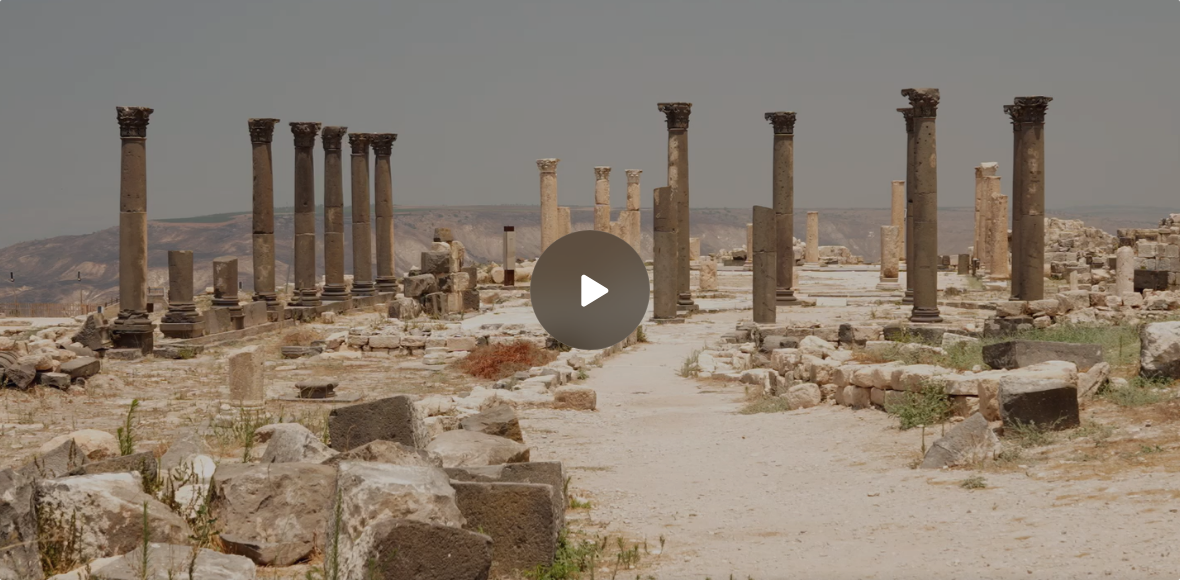
Perched on a plateau overlooking the Jordan Valley and the shimmering Sea of Galilee, Umm Qays stands as a sentinel of the past. One of the ten illustrious cities of the Decapolis, it has guarded its secrets for centuries, its grandeur concealed beneath layers of time and basalt. Countless legends swirl around this ancient metropolis, and the enigmatic inscription of the poet Arabios at its entrance only deepens the allure of its mysteries.
Umm Qays, or Gadara as the Romans named it, is a living testament to the passage of civilizations. Here, the echoes of miracles reverberate, as it is said that one of Christ's divine acts unfolded within its walls. Poets found inspiration in its grandeur, inscribing their final verses amidst its ancient stones. Greeks, Macedonians, Romans, Byzantines, and Ottomans, among others, left their indelible marks on this city. Once a bustling metropolis, its markets thrummed with the energy of trade, its theatres echoed with the applause of crowds, and its philosophers pondered life's mysteries. Today, the towering basalt columns stand as silent sentinels, guarding the secrets of a bygone era.
The city is cloaked in an aura of mystery, with legends and whispers weaving through its ancient stones. Some speak of ethereal lights dancing in the night sky, while others claim to hear voices carried on the wind. Are these mere figments of imagination? or do they echo the wisdom of philosophers like Meleager of Gadara, Menippus, and the haunting poetry of Arabios?
Bathed in the warm glow of the sun, Umm Qays presents a stark yet captivating beauty that leaves visitors spellbound. As daylight fades, the city is enveloped in a serene tranquillity. Yet, beneath this peaceful exterior lies a history imbued with the miraculous. According to the Gospels, Christ performed one of His divine healings here, casting demons from a tormented man. The echoes of this extraordinary event continue to reverberate through the ancient streets and inspire faith around the world.
Each visit to Umm Qays unveils new layers of its complex history. Once a thriving metropolis basking in Roman opulence, the city also bore witness to the trials of war. The bravery of its people is as legendary as its former grandeur. Yet, the true allure of Umm Qays lies in its enigmatic nature. Can a single visit unravel the centuries of secrets embedded within its stones? Arabios, a poet consumed by the city's mysteries, left a poignant message for posterity: "O passerby, as you are now, I was before, and as I am now, you will be”!
The poetic inscriptions that adorn Umm Qays stand as silent sentinels, guarding the city’s secrets at the precipice of time. As visitors prepare to depart, the city seems to whisper a promise of revelations yet to come. Until that day, they might heed the words of Meleager, the poet who found solace in death’s embrace within his beloved Gadara, a city he deemed “sacred”.
Christians and Muslims gather in hope
A Knight's Legacy in As-Salt: St George Church

Nestled within the labyrinthine streets of As-Salt's old city, at the summit of weathered yellow steps, lies a church with a dual identity. Revered by both Christians and Muslims, this sanctuary is adorned with wishes inscribed on scraps of hope and optimism. Local tales whisper of Saint George's steed, its neighing echoing through the church walls, where the knight found his eternal rest.
Every day, this church, a sanctuary of tranquillity and majesty, welcomes its visitors. Within its walls, the echoes of past and present intertwine, as some seek healing, while others whisper their wishes. This sacred space is a unique haven in Jordan, where Christians and Muslims converge in shared devotion.
The church, also known as the "Al-Khader" Church, was erected in 1682 above an ancient cave. Legend has it that Saint George appeared to a shepherd at this very spot, instructing him to build a church in his name. The shepherd rallied the townspeople, and together, they constructed a place of worship that continues to draw visitors seeking blessings and fulfilling wishes.
Local tales from As-Salt recount a mysterious night when a neighing sound echoed through the area. The following morning, the townspeople discovered the hoofprints of a horse within the church itself, a testament to the supernatural visit of a knight believed to be Saint George. This relic, preserved under glass, continues to intrigue and inspire visitors.
Local residents and devotees believe that the knight in question is Saint George, or Al-Khader as he is known to Muslims. Revered across various faiths, Saint George was a legendary military leader who converted to Christianity and ultimately sacrificed his life for his beliefs.
The church's reputation extends beyond its historical significance and miraculous origins. Visitors often recount experiences of a fragrant scent emanating from the cave's rocks. Additionally, it is believed that oil miraculously seeps from a specific rock within the cave, while a mysterious water source flows from above. These phenomena have further solidified the church's sacred status.
Scattered throughout the church, small scraps of paper bear the hopes and dreams of countless visitors. Here, people come to seek blessings, whether it's a woman longing to have children, a young girl yearning for love, or a sick person hoping for recovery. These wishes, inscribed on paper and left within the sacred space, are a testament to the enduring power of faith.
Al-Khader Street in Old As-Salt is home to a remarkable church that stands as a testament to the power of hope and unity. For centuries, it has been a place where people of diverse faiths converge, fostering understanding and tolerance. The church remains a silent witness to the enduring power of love, punctuated only by the occasional, imagined neighing of Saint George's legendary steed, perhaps collecting the wishes left behind!
A "Black Oasis" full of mystery
Kings, Caravans, and Inscriptions: The Story of Umm Al-Jimal
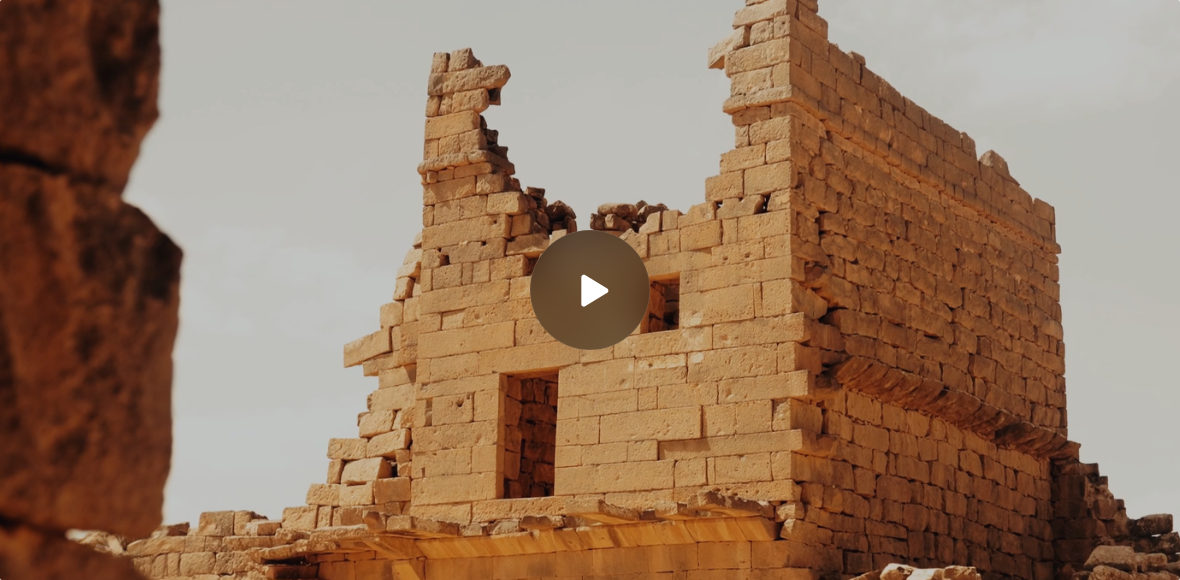
Perhaps little has been unearthed about the antiquities of Umm Al-Jimal, a site nestled in northern Jordan. Yet, its weathered black basalt stones hold a wealth of stories, perplexing archaeologists and explorers alike. The structures and inscriptions bear witness to the passage of diverse civilizations, some merely passing through, others leaving their enduring mark.
This "black oasis," with its striking volcanic rock formations, was once a bustling hub for trade caravans. Its name, Umm Al-Jimal, reflects this rich history. Dating back to the 1st century AD, when the region was part of the Nabataean Kingdom, the city is shrouded in mystery. Now a UNESCO World Heritage Site, it continues to captivate visitors with its ancient charm.
Umm Al-Jimal is a treasure trove of archaeological wonders. Inscriptions in various languages, including Latin, Greek, Nabataean, Safaitic, and early Arabic, are scattered throughout the site. These ancient texts offer tantalizing glimpses into the city's rich history, revealing the lives of its rulers and inhabitants over centuries.
A black stone bears the enigmatic inscription, "This is the tomb of Fihr the son of Sullai, teacher of Ghadima, king of the Tanoukh." The identity of this enigmatic figure has perplexed archaeologists and historians alike. Was he a tribal chieftain or a kingmaker, as the inscription suggests? His role in the history of Umm Al-Jimal remains a captivating mystery.
This mysterious inscription may refer to King Ghadima Al-Abrash, who ruled over the Tanukhids tribes inhabiting southern Syria and Jordan. These tribes, known for their use of ancient Arabic language and Nabataean script, add another layer of intrigue to the enigmatic stones.
This inscription is just one piece of the intricate puzzle that is Umm Al-Jimal. Originally settled by the Nabataeans in the 1st century AD, the city later fell under Roman rule, transforming into an agricultural and commercial center. During the Byzantine era, Umm Al-Jimal embraced Christianity, leading to the construction of sixteen churches, including the ancient Julianos Church. The city's rich history continued under the Umayyad Caliphate, marking the beginning of Islamic rule in the 7th century AD.
Umm Al-Jimal was a strategic crossroads, situated along the Roman Trajan Road and connecting Palestine and Jordan to Syria and Iraq. As one of the ten cities of the Decapolis League, a federation of Greek and Roman cities, it held a significant position at the intersection of modern-day Jordan, Syria, and Palestine.
In ancient times, the imposing Commodus Gate served as the main entrance to Umm Al-Jimal. Today, it stands as a boundary between the city's modern and ancient quarters, a silent witness to both its vibrant present and its enigmatic past.
In addition to the impressive gate, another prominent landmark in Umm Al-Jimal is the imposing "Castellum." This structure has a rich history, beginning as a Nabataean edifice before being repurposed by the Roman army after 106 AD. Its strategic orientation towards Petra, the capital of the Nabataean Kingdom, adds more layers of intrigue to this enigmatic city.
Home of the Pillar-Saints
Um er-Rasas: A Fortress of Faith and A Sanctuary of Solitude

Staurachios son of Zada, the meticulous artisan responsible for the mosaics in the Church of Saint Stephen in Um er-Rasas, was unaware that his name would be etched into eternity. His legacy lives on in an inscription adorning the church altar, a testament to his dedication amidst the trove of inscriptions and secrets that abound in this southeastern Jordanian archaeological gem.
Um er-Rasas, also known as "Kastron Mefaa," is a treasure trove of archaeological artifacts spanning the Byzantine, Roman, and early Islamic periods. Once a Roman military camp, it blossomed into a thriving city in the fifth century. However, archaeologists believe that only a fraction of its secrets has been unearthed, hinting at a far richer and more extensive history waiting to be discovered.
Um er-Rasas, a city adorned with sixteen churches, boasts remarkably preserved mosaic floors. The Church of Saint Stephen's mosaic floor, in particular, is a captivating masterpiece, depicting the region's cities of that era. It offers a glimpse into the history of this site, once a haven of peace, piety, and monastic seclusion, where hermits forsook worldly pursuits to embrace a life of meditation.
The intricate mosaics adorning the church floors in Um er-Rasas offer a vivid window into the lives of its ancient inhabitants. Depicting birds, livestock, and hunters, these pictorial maps provide invaluable insights into the daily life of the people. The mosaic floor of St. Stephen's Church is particularly noteworthy, showcasing numerous Jordanian, Palestinian, and Egyptian cities from the Byzantine Empire, identified by their Greek names.
Within the imposing walls of this fortress, visitors can explore a labyrinth of buildings, arches, and churches showcasing exquisite architectural styles. The mosaic floor, depicting the region's cities including Jerusalem, Um er-Rasas, and Alexandria, invites contemplation and wonder.
Um er-Rasas once served as a sanctuary for ascetics who sought solitude in its towering structures. Visitors can still witness the two square stylite towers that bear testament to the practice of "pillar saints," monks who would isolate themselves atop columns for years, engaging in a rigorous pursuit of spiritual enlightenment.
These towers, more than mere historical monuments, symbolize the resilience and strength of the human spirit. They represent a realm where the boundaries between earth and heaven blurred, where isolation was profound, and where only the most resolute individuals could endure the arduous test of faith and endurance.
City of Crossroads
Ayla: a Tale from "One Thousand and One Nights"
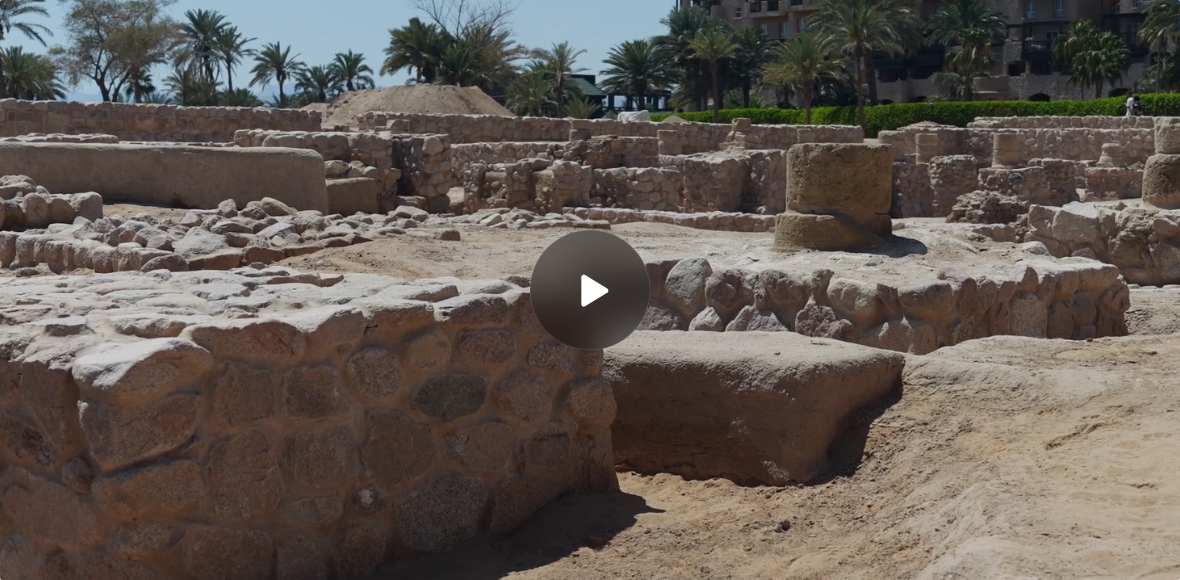
On the coast of Aqaba, Jordan, Ayla's location made it a vital trade center during the early Islamic period, linking the Arabian Peninsula, Africa, and the Levant.
Ayla was among the first carefully planned cities of the Islamic Caliphate, demonstrating early Islamic urban design. This vibrant city flourished as a crossroads of culture and commerce, where the scent of Arabian spices mingled with the sea air, and merchants from distant lands such as Persia and Byzantium traded in its bustling markets.
Dating back to approximately 650 AD during the rule of the third Caliph, Uthman ibn Affan, Ayla emerged as one of the Caliphate's initial ventures, playing a key role in facilitating trade. Situated strategically at the nexus of the celebrated spice trade route, it gained special prominence as a vibrant meeting place where far-reaching worlds converged.
This reputation has brought the city international fame. Some sources indicate that the city's tales are mentioned in the famous book "One Thousand and One Nights", whose diverse stories continue to inspire filmmakers and storytellers.
Today, a visitor wandering through the city's ruins can't help but marvel at the ingenuity of its planners and namers. Envision a rectangle, precisely 170 meters long and 145 meters wide, embraced by formidable walls roughly four meters in height. Imagine those walls punctuated by some 24 sturdy towers, standing guard over the ancient city.
Reflecting its esteemed position as a crossroads of civilizations, Ayla boasted a striking urban design with gates on each of its four sides: the Egyptian Gate to the north, the Damascus Gate to the east, the Hijaz Gate to the south, and the Sea Gate to the west. Towards the northeast, at the city's heart, stood a mosque measuring an impressive 35 by 55 meters.
Historians note Ayla's sustained prosperity throughout the Umayyad, Abbasid, and later Fatimid periods. However, this vibrancy waned in the late twelfth century AD, succumbing to the dual blows of devastating earthquakes and incursions by the Crusaders.
More than just a marketplace, Ayla thrived as a vibrant melting pot of cultures, its society deeply rooted in Islamic faith yet open to the wider world. Today, its silent ruins bear witness to this rich past. The remnants of its walls, gates, and dwellings whisper tales of a city that once served as a cradle of human creativity, leaving behind a legacy that echoes through the centuries.
The World's Oldest Purpose-Built Church
Aqaba Church: A Witness to the Dawn of Christianity
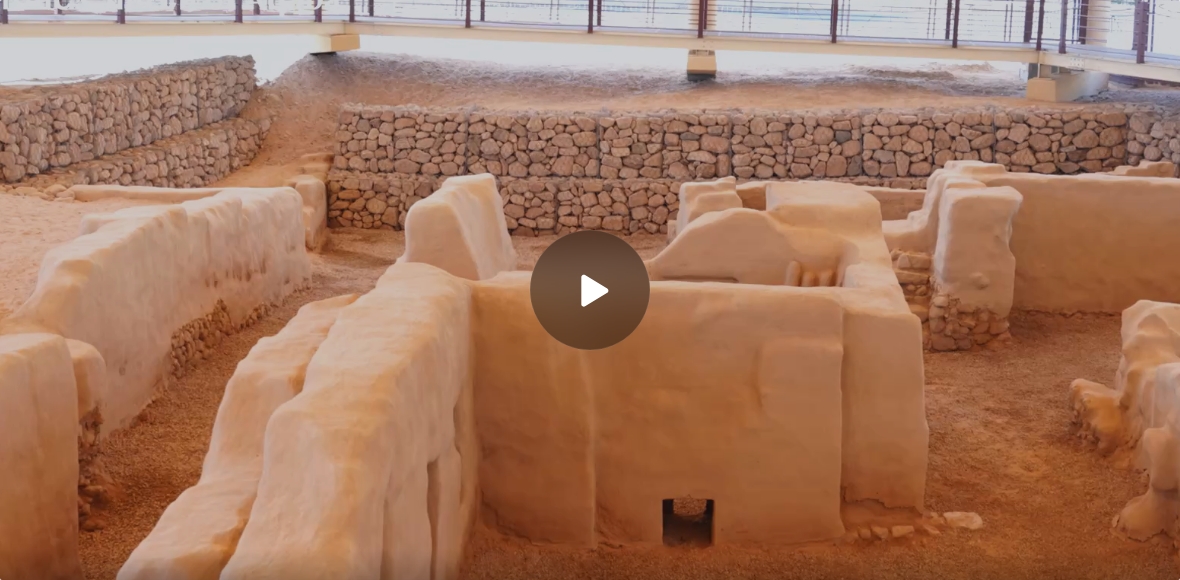
This church stood witness to the very dawn of Christianity. Its mud-brick walls endured the persecutions under the Roman Emperor Diocletian in the late third century AD, remaining concealed beneath the sands of the Jordanian city of Aqaba until a 1998 archaeological expedition brought it to light. Remarkably, it stands as the world's oldest known purpose-built Christian church.
Unlike many ancient churches that were originally secular structures repurposed for worship, the Aqaba Church was intentionally erected as a place of worship during the nascent stages of Christianity's expansion. It is believed to have been constructed between 293 and 303 AD specifically to serve the needs of the earliest Christian adherents.
Archaeological findings suggest that the church site remained the heart of a flourishing Christian community, whose history embodies a remarkable narrative of religious coexistence and human fraternity. When Yuhanna (John) Ibn Ru'bah, the Bishop of Ayla (the ancient name for Aqaba), met the Prophet Mohammad (peace and blessings be upon him) upon his arrival in Tabuk, he secured a covenant of security and safety from the Prophet for all the people of Ayla. This event underscores a profound moment of interfaith understanding in the region's early history.
The Prophet Muhammad (peace and blessings be upon him) formalized this agreement by writing a covenant of security for the bishop, stating: "In the name of God, the Most Gracious, the Most Merciful. This is a pledge of security from Allah and Mohammad, the Prophet and Messenger of God, for Yuhanna Ibn Ru'bah and the people of Ayla, for their vessels both on land and sea. They are under the protection of God and the protection of Muhammad, the Prophet, and all those who are with them from the people of Syria, Yemen, and the seafarers. Should any among them commit an act of aggression, their property shall be forfeit, but not their life. Furthermore, they shall not be denied access to any water source they seek, nor to any road they wish to travel, whether by land or by sea.”
Historians posit that the church's sheltered position within the Roman Empire likely spared it from the widespread destruction during the Great Persecution, which erupted just years after its construction. This brutal campaign, waged by the emperor's forces against Christians, led to the ruin of numerous Christian edifices throughout the region.
The church's layout offers a remarkable glimpse into early Christian architectural design. It is a three-aisled basilica with a central nave measuring 16 by 26 meters, oriented along an east-west axis. Constructed from mud brick atop a sturdy stone foundation, it once boasted arched doorways and possibly even a second story, reflecting its significance and popularity during that era.
The Aqaba Church provides an exceptional window into the dawn of Christianity and the formative stages of church architecture. Its early establishment and its intentional design specifically for worship distinguish it from other churches of that period. Historical accounts suggest it initially served approximately 60 worshippers, later expanding its capacity to around 100.
Remarkably, a bronze cross, preserved beneath the sands of Aqaba for over 1,600 years, was unearthed at the church site! This significant artifact was discovered among several graves excavated at the location.
Despite surviving intense persecution, the violent Galilee earthquake of 363 AD brought an end to the church's prayers, leaving its halls to the embrace of the desert sands. Yet, paradoxically, those same sands acted as a preservative, safeguarding its walls and allowing its extraordinary story to echo through the centuries.
An Ancient Stage of Temptation
Machaerus Castle and the Treacherous Dance of Death
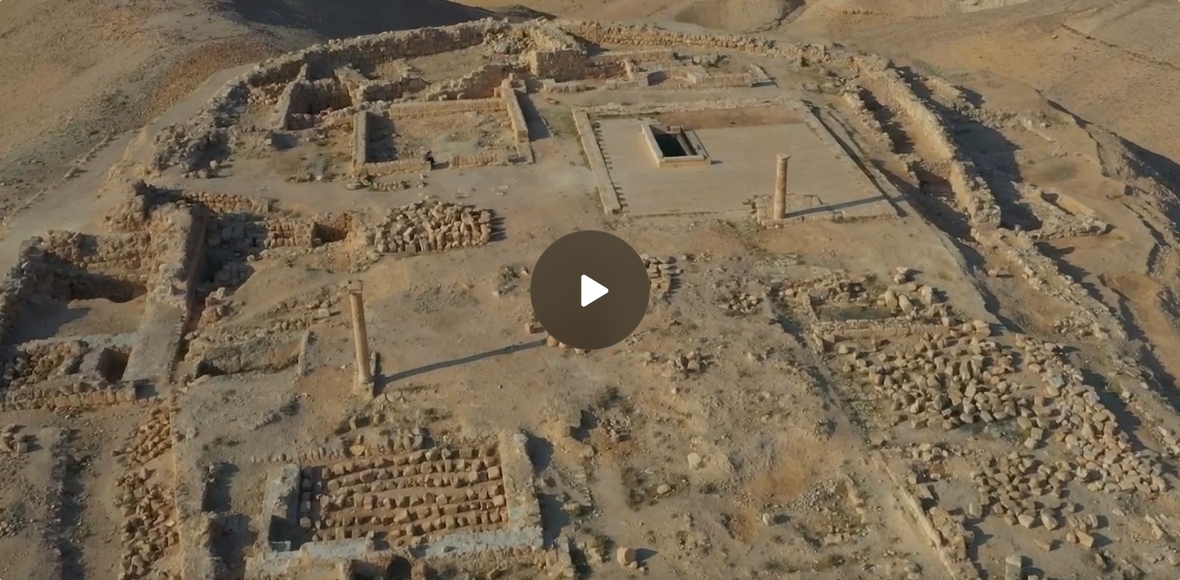
High atop a commanding rocky precipice, gazing down upon the tranquil, shimmering expanse of the Dead Sea, Machaerus Castle narrates a dramatic saga of dominion, treachery, and sorrowful destiny. It was within these very stone walls that King Herod Antipas enacted his infamous deed, swayed by the allure of a dancer who chillingly requested the head of John the Baptist as her reward.
Notwithstanding its grim association, Machaerus Castle's ancient stones also hold a significant history stretching back millennia. Originally constructed by Alexander Jannaeus around 90 BC as a stronghold against Roman influence, it later fell under Roman occupation in 57 BC. King Herod the Great subsequently rebuilt and fortified it, eventually passing it on to his son, Herod Antipas.
Perched atop a mountain soaring over 730 meters above sea level, approximately 32 kilometres southwest of the Jordanian city of Madaba, stands the Castle of Machaerus – or "Fortress of Machaerus," deriving its name from the Greek word for “sword."
The Roman historian Flavius Josephus depicted the castle as a naturally unassailable, lofty fortress encircled by profound valleys on every side. The summit once boasted a formidable wall, stretching 100 meters in length and 60 meters in width, punctuated by three corner towers, each reaching approximately 27 meters in height. Today, however, only scattered remnants endure, hinting at its former grandeur through the vestiges of the palace, towers, aqueducts, courtyards, pools, and columns.
While the castle holds considerable historical and archaeological value, its religious significance is even more profound. Religious texts reveal that the Prophet Yahya (revered as John the Baptist in Christianity) was imprisoned within these walls and ultimately beheaded at the command of King Herod. Upon arriving at Machaerus Castle, visitors are immediately struck by the weight of this pivotal story, its many facets and details echoing through time.
The biblical narratives of the New Testament, coupled with the accounts of the historian Flavius Josephus, detail how King Herod Antipas incarcerated John the Baptist for his public condemnation of Herod's marriage to Herodias, his brother Philip's wife.
Numerous accounts and religious texts recount the lavish banquet hosted by King Herod within the walls of Machaerus Castle. It was during this feast that Salome, Herodias's daughter, captivated the king with her exquisite dance. So enthralled was Herod that he vowed to grant her any wish.
Prompted by her mother's vengeful desire, Salome requested the head of John the Baptist on a platter. Despite his reluctance, Herod, bound by his oath, commanded the beheading of John the Baptist, his head presented to the dancer. Today, atop this mountain that once bore witness to such dramatic events, visitors can vividly sense the weight of the castle's entire history.
Wandering among the castle's fragmented walls, visitors can almost discern ancient whispers embodying the timeless conflict between truth and falsehood, morality and power. Though Herod ultimately silenced the voice of John the Baptist within these very walls, the tale of his unwavering fight for truth has been indelibly etched into history upon the summit of Mount Machaerus.
Where Caves Whisper Legends
Iraq al-Amir: the Tale of A White Palace Guarded by Stone Lions

An air of secrecy and mystery invariably clings to caves, a feeling that profoundly envelops visitors to the Iraq al-Amir region, nestled west of Jordan's capital, Amman. The area's very name, meaning "Prince's Caves," hints at its numerous grottoes and the enigmatic prince who erected its palace. Was it a display of power that drove him, or perhaps the yearning to impress a woman whose father demanded miracles?
The tale of this enigmatic locale unfolds with a magnificent palace, its narrative continuing through the whispers of its caves and the silent testimony of its ruins, all hinting at a once-thriving past. Remarkably, it stands as one of the few Hellenistic monuments to have weathered the centuries with such impressive preservation.
Known as Qasr al-Abd, meaning "Palace of the Servant," this magnificent structure is believed to have been erected by Hyrcanus, the leader of the influential Tobias family and ruler of Ammon, sometime between 187 and 175 BC. The first-century AD Roman historian Flavius Josephus himself lauded it as a majestic palace crafted from gleaming white stone and adorned with intricate carvings of leopards, lions, and lionesses.
The palace's allure lies in its unique fusion of Hellenistic architectural principles and local building traditions. This rectangular, two-story edifice stretches approximately 40 meters in length and 20 meters in width, rising to a height of about 14 meters. Its construction employed colossal blocks of pristine white limestone, with some individual stones reaching an astonishing seven meters by three meters in size.
Historical accounts suggest the name "Palace of the Servant" might originate from a title held by Hyrcanus himself, implying his role as a servant to the king. Alternatively, local lore recounts a more romantic, yet tragic, tale: Hyrcanus, a commoner, fell deeply in love with a nobleman's daughter. Her father, in response to his marriage proposal, demanded the construction of an unparalleled palace. Though Hyrcanus fulfilled this grand request, the nobleman, unwilling to see his daughter wed a commoner, ultimately ordered his death.
Intriguingly, Josephus's account of the palace also details how Hyrcanus, embroiled in a dispute with his brothers, ingeniously carved out a series of caves, each several meters deep, by excavating a rocky outcrop facing the palace. He then strategically narrowed the cave entrances to allow passage for only a single person at a time. This clever design served as a personal sanctuary, safeguarding him from the threat of being surrounded and captured by his feuding siblings.
While the details of Hyrcanus's life remain veiled in mystery, his is not the only compelling narrative woven into the fabric of the Iraq al-Amir area. Qasr al-Abd itself underwent a transformation, repurposed as a church during the Byzantine era. Furthermore, archaeological digs have unearthed Islamic pottery dating from the Umayyad and Mamluk periods, offering tangible proof of the area's enduring activity through successive epochs.
In Iraq al-Amir, the whispers of Hellenistic civilization linger within the majestic form of Qasr al-Abd, a white limestone mirage where carved lions stand frozen in time. The enigmatic tales of the ambitious "prince" and his utopian vision continue to captivate, drawing those who seek wonder and the echoes of fading stories.
A Roman Mausoleum with a Nabatean Soul
Echoes of a Noble Family: Unearthing the Mystery of An Nuwayjis Shrine
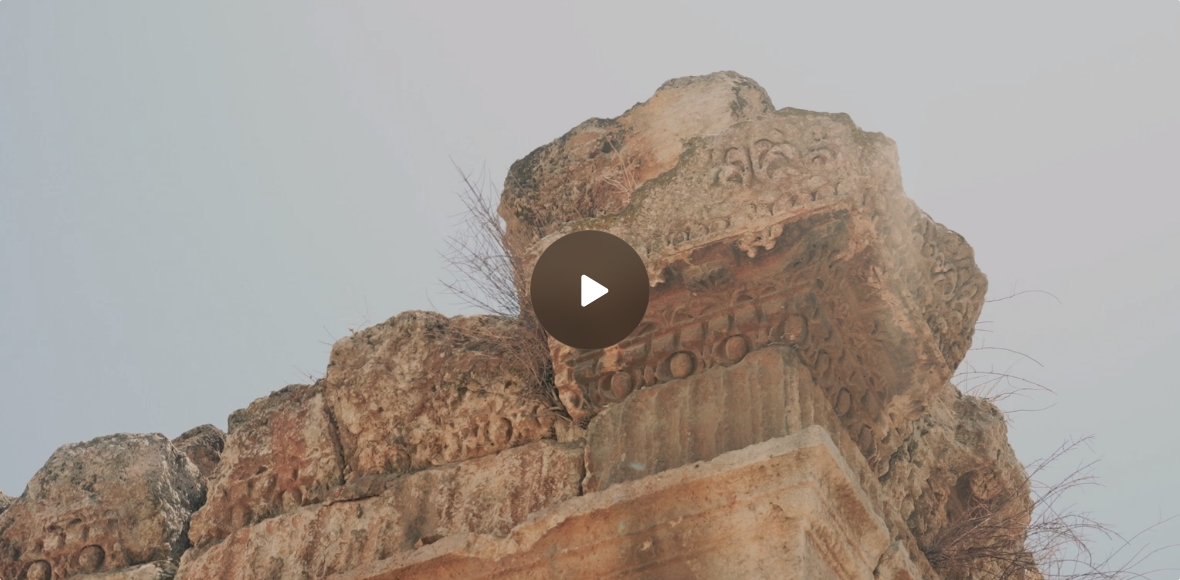
A Roman mausoleum and family tomb, built in the late second century AD, An Nuwayjis Shrine stands as a testament to the wealth and status of its original occupants. While its elegant design and white limestone construction are purely Roman, a closer examination reveals a fascinating cultural blend. The subtle presence of Nabatean architectural details connects the monument to Jordan’s deeper, more ancient past.
The tale of this enigmatic locale unfolds with a magnificent palace, its narrative continuing through the whispers of its caves and the silent testimony of its ruins, all hinting at a once-thriving past. Remarkably, it stands as one of the few Hellenistic monuments to have weathered the centuries with such impressive preservation.
The building's structure is defined by a central, square chamber measuring 9.7m on each side, with smaller chambers at each corner. Inside, the tomb contained burial chambers, and five stone sarcophagi remains were discovered scattered around the exterior.
The building's dome was constructed using a technique known as "squinch arches". This is a common feature in Nabatean architecture, seen to great effect in the ancient city of Petra. This architectural detail suggests that the builders were either skilled Nabatean craftsmen or Romans who were heavily influenced by Nabatean artistic traditions. It's a key feature that highlights the unique cultural fusion at the site.
It's also worth noting the historical documentation of the site. The Swiss explorer Johann Ludwig Burckhardt visited An Nuwayjis Shrine in 1812 and included a detailed description of it in his records. This was the same year he famously reintroduced the ancient city of Petra to the world. Some historical sources suggest that for centuries, An Nuwayjis Shrine was revered as a sacred site.
The name of the shrine is believed to be derived from the word "Najas," which means "ruler" in the Ethiopian and Himyaritic languages. This has led to speculation about the identity of the buried family. Some unsubstantiated theories have even linked the site to the Prophet Job, despite the prevailing belief that his main burial site is in the neighbouring city of As Salt.
The historian Claude Reignier Conder, who also visited the site, noted that this specific type of Roman shrine was typically built for deceased Roman rulers, military leaders, or high-ranking dignitaries and their families.
Today, visitors can wander through the remnants of An Nuwayjis Shrine and witness the traces of its successive layers of history. While the main central square room is still visible, the scattered remains of stone sarcophagi and the remains of the dome offer a fascinating glimpse into Jordan's ancient past. These artefacts tell a powerful story of intertwining cultures and beliefs that spanned hundreds of years.
A Chronicle of Conflict and Resilience
Ash Shawbak Castle: Secrets of the Legendary Siege of Montreal
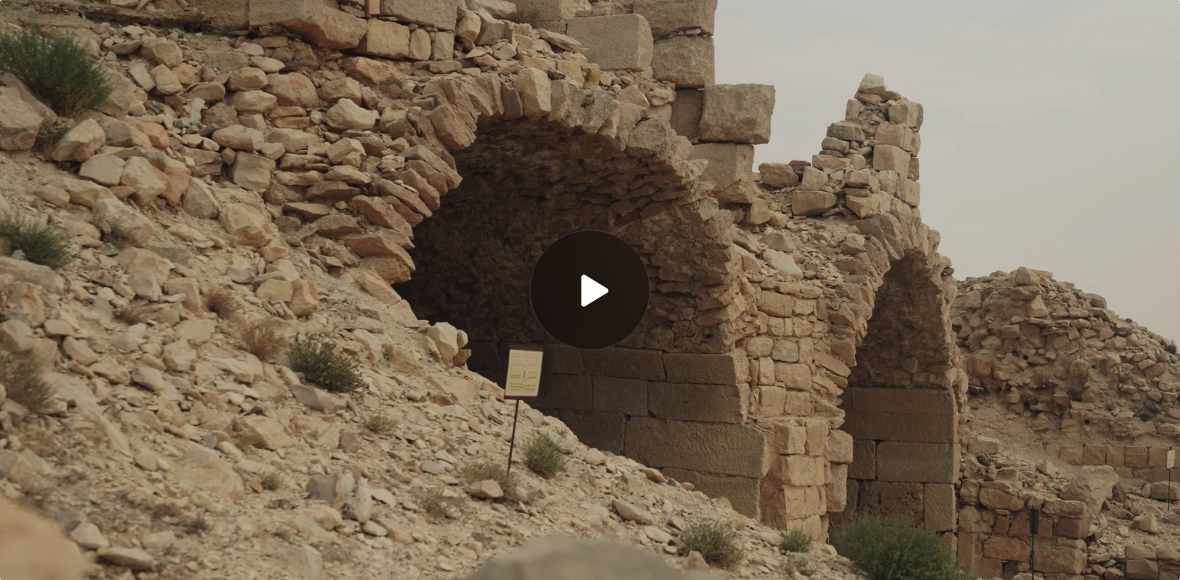
Perched atop a hill, the ancient stones of Ash Shawbak Castle stand as a witness to a thousand years of history. It is not just a collection of relics; it is a living archive, documenting epic battles, strategic genius, and the rise and fall of kings and sultans.
Formerly known as Montreal or "The Royal Mountain," this Crusader castle withstood Saladin's army for months before it was finally captured. Its history chronicles a fascinating account of secret passages, the steadfastness of its defenders, and the chivalry of its attackers.
Located in southern Jordan, Ash Shawbak Castle is a 12th-century Crusader fortress that offers visitors a unique glimpse into a turbulent era of conflict and resilience. It stands as a testament to military architecture, with its impressive stone walls having withstood centuries of natural elements.
According to historical sources, Ash Shawbak Castle was built in 1115 AD by order of King Baldwin I, the ruler of Edessa and Jerusalem. Its construction was part of a larger project to strengthen the Crusader military presence in the region. The new fortress was originally named the "Royal Mountain," a name that was later Latinized to Montreal.
The castle's epic story is defined by the long siege waged by the army of Sultan Saladin in 1187. The fortress's defenders held out against the attacking forces for two years, a military feat that astonished their contemporaries. Historians attribute this endurance to a remarkable engineering feat: a secret passageway of 375 steps carved into the mountainside. This passage gave the Crusaders access to an underground spring at the foot of the mountain, guaranteeing them a constant supply of fresh water throughout the siege. They were only forced to surrender when their food ran out.
Sources indicate that the siege ended with a dramatic and poignant moment. It's said that the defenders inside the castle, facing starvation, offered to sell their wives and children in exchange for food. However, when they surrendered, the commander Saladin, a man known for his chivalry, showed compassion. He returned all the women and children to their families, earning the respect of his enemies and cementing his place in history.
Today, a wanderer through the castle's ruins can feel the echoes of its complex history. Inside the crypts of a ruined church, a simple stone chair is displayed, which sources indicate was once the humble seat of Saladin himself. The castle's layout also tells a story of changing ownership, with Crusader inscriptions standing side-by-side with exquisite Quranic inscriptions added later by the Ayyubid and Mamluk dynasties. This blend of architectural and historical elements visually represents the cultural shifts that shaped this region for centuries.
While much of the original Crusader structure has disappeared, the remains of the castle offer a clear glimpse into its past. The castle was once a massive fortress with triple walls, as described by one historian in 1217. Today, sections of the curtain wall from the Crusader era are still visible, along with two main towers. The exterior walls and towers are now adorned with intricate carved reliefs from 14th-century Mamluk renovations, adding a layer of Islamic art to the Crusader foundations.
Although the castle's interior is noticeably ruined, the remaining elements provide a vivid visual account of its many transformations. They offer visitors a rare opportunity to experience a long history of struggle, resilience, and human fortitude in the face of adversity.
Hidden in the Hills of Jordan Valley
Tabaqat Fahl of the Decapolis: A Divine Prophecy to the Journey of Faith

Nestled in the hills of the Jordan Valley lies the ancient city of Tabaqat Fahl or as it was once called “Pella”, a historical treasure and one of the ten famous cities of the Roman Decapolis. Tabaqat Fahl’s soil tells the story of civilisations that have risen and fallen over more than 9,000 years, with every layer revealing a new chapter in its continuous human history.
Unlike most archaeological sites that are defined by a single period, Tabaqat Fahl's history spans from the Neolithic to the Islamic era. Archaeologists have uncovered evidence of a Stone Age village, a vibrant Hellenistic city, a major Roman metropolis, and a bustling Byzantine center. Today, visitors can wander through a modern Jordanian town where every step represents a journey across millennia.
While the city's origins trace back to the Stone Age, it was first mentioned in Egyptian texts from the 19th century BC as "Pihilum." It later took on its Greek name, Pella, after the capital of Macedonia and the birthplace of Alexander the Great.
Tabaqat Fahl boasts numerous historical relics, including traditional theatres, Roman temples, Byzantine churches, and a mosque from the Umayyad Islamic period. The city's role in early Christianity is particularly unique.
Early Christian texts suggest that a "divine prophecy" led believers to seek refuge in Tabaqat Fahl before the Roman siege of Jerusalem, and the destruction of Herod’s temple in 70 AD. According to the historian Eusebius of Caesarea, Tabaqat Fahl was a major refuge for early Christian fathers. While this prophecy is a key part of the city's narrative and church tradition, archaeological evidence has not supported it.
During the Byzantine era, Tabaqat Fahl flourished as a center of Christianity, and its prosperity is reflected in its architecture. Excavations have revealed stunning remains of churches, including a basilica and a three-nave church, adorned with intricate and well-preserved floor mosaics. These mosaics offer a colourful glimpse into the daily lives and beliefs of the city's ancient inhabitants.
Under Roman rule, Tabaqat Fahl was a member of the Decapolis, a league of ten cities, and its grandeur is still visible today. Visitors can explore the magnificent remains of the Roman Odeon, a small theater-like building used for performances and gatherings.
The city was arranged in a grid pattern, and the remains of public baths and markets are scattered throughout the site. This period shows that Tabaqat Fahl was not just a remote outpost but a thriving, cosmopolitan center of the vast Roman Empire.

